Earn 1 hour of continuing education by joining OT Potential after taking this course.
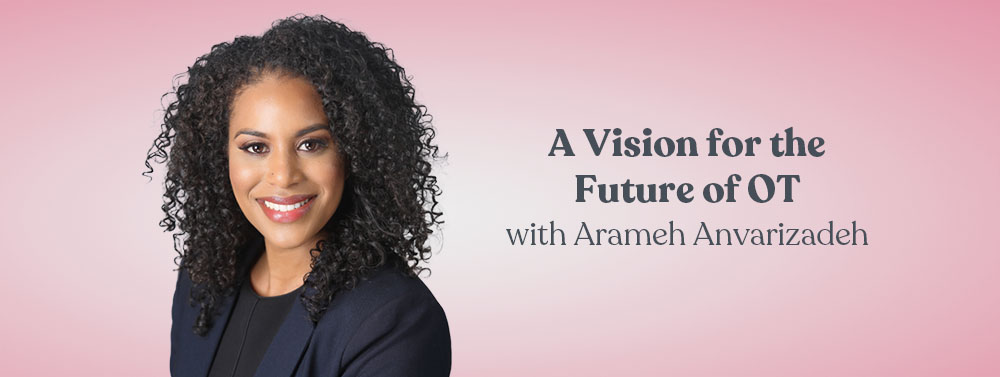
Listen: Apple | Spotify | Google
What is the future of OT? How will your own OT career look over the next decade? How will our profession change and evolve?
The journal article we explore in this podcast is very concise, but it certainly packs a punch. It lays out a vision set by the American Occupational Therapy Association for where they would like to see the occupational therapy profession by 2025.
We’ll kick off the podcast by reviewing the article. Then, we’re thrilled to have Arameh Anvarizadeh, Vice President of the AOTA Board of Directors, join us for a discussion. She will share how the Vision has changed since its original publication. And, most importantly, we’ll discuss what this Vision means for practicing OTs—and how we can build our future with intention in this rapidly evolving world.
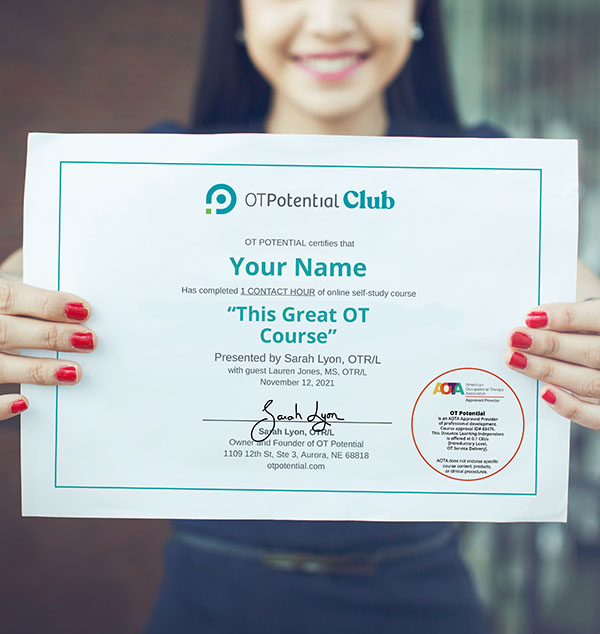
Earn 1 hour of continuing education
1. Listen to the podcast for free.
2. Sign up for the OT Potential Club.
3. Pass the quiz and download your certificate!
Primary Journal Article Explored
When you log in, be sure to check out the OT Potential Club’s written breakdown of the following research article. Then, share your questions and thoughts with fellow practitioners.
Supporting Research and Journal Articles
Additional papers on the future of OT
- A vision splendid; visioning for the future of occupational therapy
- Building globally relevant occupational therapy from the strength of our diversity
Research specifically related to the effectiveness and need for OT
- Dementia prevention, intervention, and care
- Higher Hospital spending on occupational therapy is associated with lower readmission rates
Learning Objectives
- You will be able to recognize some current gaps in our profession that the AOTA Vision pushes us to address.
- You will be able to describe why increasing occupational therapy’s diversity, equity and inclusion is critical in preparing us to meet the societal issues of the future.
Agenda
Intro (5 minutes)
Breakdown and analysis of journal article (5 minutes)
- How was the AOTA 2025 Vision drafted?
- The AOTA 2025 Vision
- The Guideposts of the Vision
- The UPDATED version of the Vision
- Takeaways for OT practitioners
Discussion on practical implications for OTs (with guest Arameh Anvarizadeh) (50 minutes)
- Can you tell us the story of how you became an OT—and then what made you want to become involved in the leadership of AOTA?
- Can you give us a little background on how the diversity, equity, and inclusion pillar was added?
- As you read through the core vision statement, what does it mean to you?
- How would you like to see busy, practicing OTs interacting with Vision 2025?
- When we look at the pillars, how do you personally process each one for yourself as an OT?
- Effective
- Leaders
- Collaborative
- Accessibility/Equity, Inclusion, Diversity
- Fast forward to 2025: what’s one or two things you’d like to see evolve or change for our next Vision?
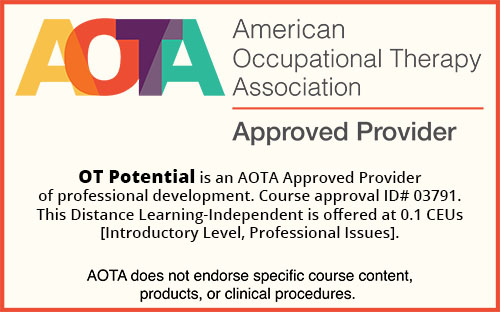
Instructional Methods/Registration/Special Needs Requests/Cancellation Policy
This course is an independent/self-study course delivered via podcast on iTunes, Spotify, Google Play & more.
If you need accommodations to take this course, please contact us and we will address your needs on an individual basis.
If we cancel a promoted course, event, live stream, or any other paid CEU offering prior to release, and you subscribe explicitly for said offering, you are eligible for a full refund if you did not complete and earn any other CEU quizzes or certificates during your subscription.
If a live webinar is cancelled that you signed up for, our system will automatically generate an email to you and if possible, we will inform you of the rescheduled date. Our most current webinar schedule will be found at: otpotential.com/live-ot-ceu-webinars.
Course Completion Requirements
In order to receive a certificate for this course, you must first participate in the podcast/webinar in its entirety. Then, you will need to take the quiz that will accompany the course and earn 75% or higher. If you pass, a certificate will be automatically generated and sent to your email. Quizzes for live (distance learning–interactive) webinars must be completed within 3 days of completing the webinar.
Target Audience/Educational Level
Our target audience is occupational therapy practitioners who are looking to learn about the vision for the future of OT. The educational level is introductory.
Financial and Non-financial Disclosures
It is the policy of OT Potential to disclose any financial and non-financial interest the provider or instructor may have in a product or service mentioned during an activity. This is to ensure that the audience is made aware of any bias of the speaker.
We here at OT Potential have no financial stake in this topic. Our guest, Arameh Anvarizadeh, has no financial interest in this topic to disclose.
Speakers
Arameh Anvarizadeh, OTD, OTR/L, FAOTA:
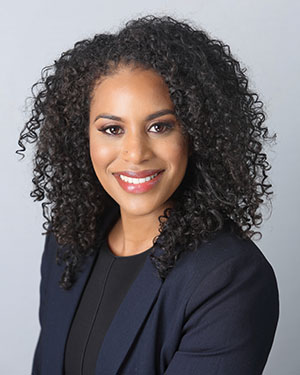
Arameh Anvarizadeh, OTD, OTR/L, FAOTA is the Director of Admissions and Associate Professor of Clinical Occupational Therapy at the USC Mrs. T.H. Chan Division of Occupational Science and Occupational Therapy. Dr. Anvarizadeh is responsible for developing the holistic admissions process and for maintaining effective admissions strategies and procedures within the division. She also oversees each academic program and makes certain the division is filled with high caliber diverse students.
Dr. Anvarizadeh is a Founding Member and Chair of the Coalition of Occupational Therapy Advocates for Diversity (COTAD), a non-profit organization striving to empower occupational therapy leaders to engage in practices that increase diversity, equity, inclusion, justice, anti-racism and anti-oppression for a more transformative occupational therapy profession. She is responsible for developing the COTAD toolkit, the Ignite Series, and COTAD Chapters. She tirelessly works to support and establish COTAD Chapters at academic programs across the country while empowering students to facilitate dialogue, awareness, and change related to issues of diversity, equity, and inclusion, anti-racism, and anti-oppression within the profession and beyond. Read full bio.
Sarah Lyon, OTR/L:
Sarah’s passion is helping fellow OT practitioners translate evidence into daily practice. Sarah earned her BA in religion from St. Olaf College, then earned her master’s degree in occupational therapy from New York University in 2011.
Since then, she’s worked in numerous facilities, including a critical access hospital, an acute trauma hospital, and a state inpatient psychiatric hospital. Sarah is the founder/owner of OT Potential. Read more about OT Potential here.
This course was designed to meet your continuing education requirements
We designed the courses in the Club to meet the requirements for “online” and “independent/self-study” courses. To verify the requirements from your specific state (within the US), check out our post, OT Continuing Education Requirements. If you are outside of the United States and have questions, please contact us.
We are proud to be an AOTA Approved Provider and to meet the requirements for your NBCOT renewal.
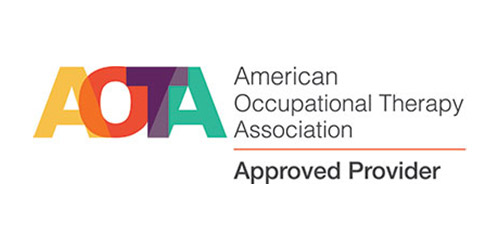
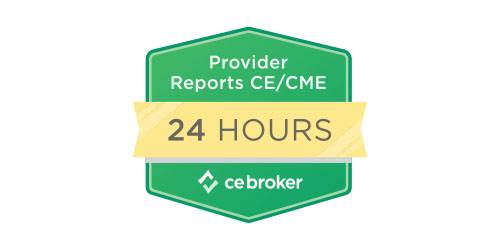
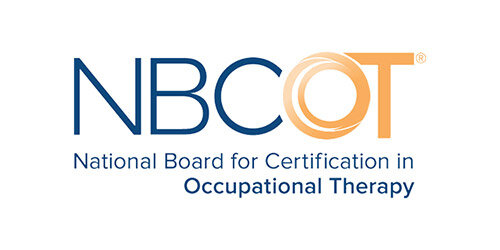
See our other OT courses!
A Vision for the Future of OT with Arameh Anvarizadeh • OT Potential
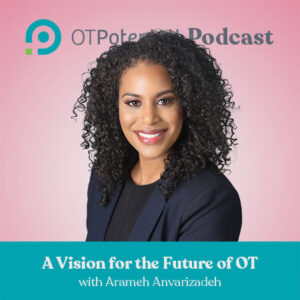
Today we’ll be covering “A Vision for the Future of OT.” We’ll look at new research and discuss it with Dr. Arameh Anvarizadeh, OTD.
Course Provider: Organization
Course Provider Name: OT Potential
Course Provider URL: https://otpotential.com/
Course Mode: Online
Start Date: 2022-01-10
Duration: 01:00:00
Course Type: Subscription
4.85

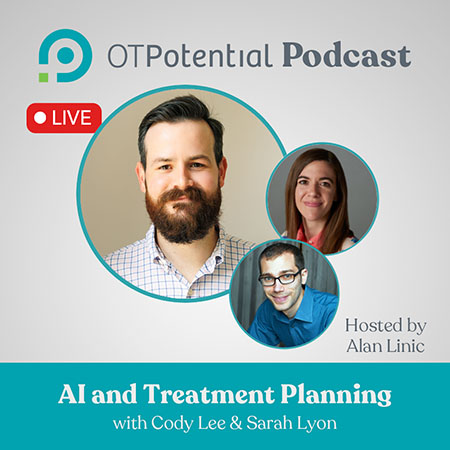
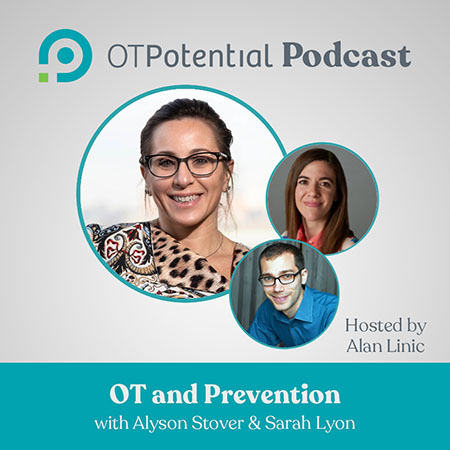
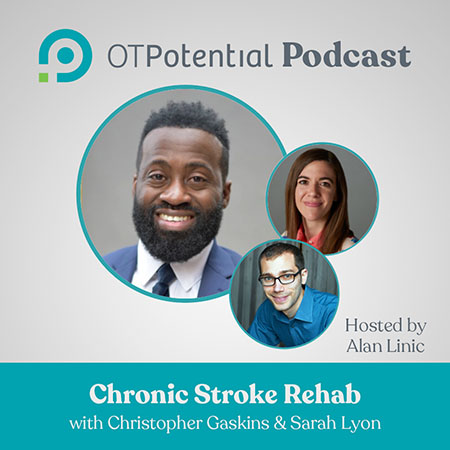
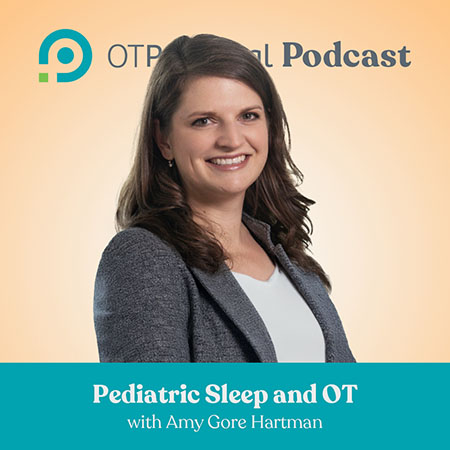
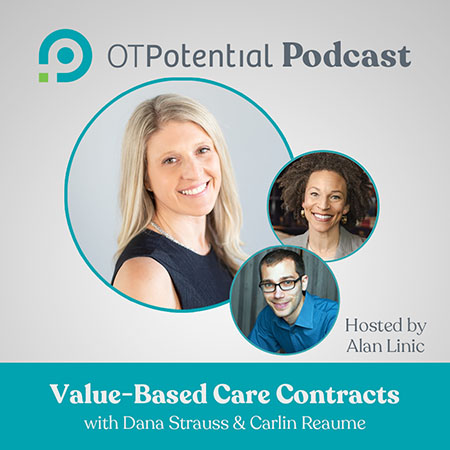
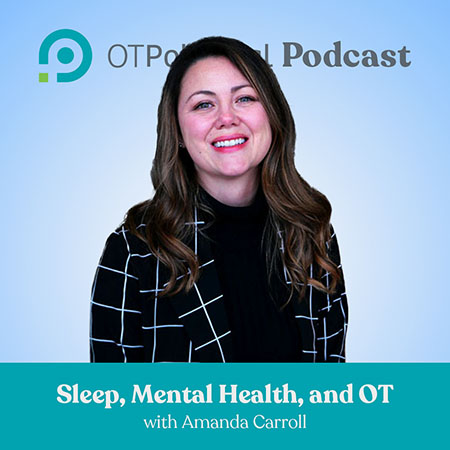
2 replies on “A Vision for the Future of OT”
Do you have transcripts available for the podcasts?
Hey Emily! Great question! At this time we don’t have the available 🙁 We do have a written article review and related assessments organized for you in the Club. But, I am getting more requests for transcripts, which makes sense! Honestly, one of the biggest hoops to jump through is figuring out how to get the courses approved as text based courses through the AOTA…. which is achievable and comments like this make me feel motivated to pursue this!!